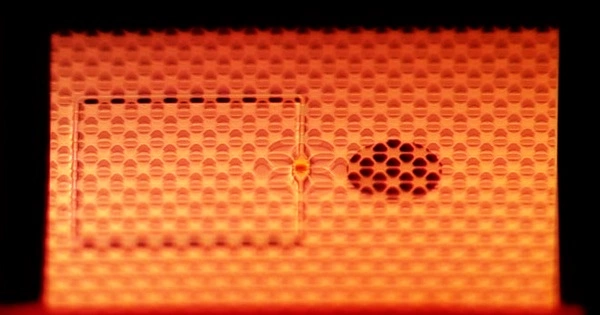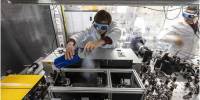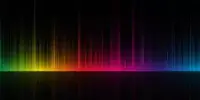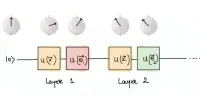Researchers at the Niels Bohr Institute at the University of Copenhagen have significantly improved the coherence time of a previously developed quantum membrane. The enhancement will increase the membrane’s usability for a wide range of applications. The membrane, with a coherence time of one hundred milliseconds, can be used to store sensitive quantum information for later processing in a quantum computer or network. The findings have been published in Nature Communications.
One of quantum mechanics’ fundamental principles is that objects can behave both as waves and as particles. These objects can also be in “superposition,” which means they are in two different places at the same time.
According to Michael R. Vanner, principal investigator at Imperial College London’s Quantum Measurement Lab, the “quantum drum” is a tiny mechanical oscillator that is so small and compliant that even light reflection can cause it to move. The researchers can control the motion of the drum by striking it with light—the drumstick.
The researchers are looking for what are known as “quantum interference patterns” in quantum mechanics. This is when an individual particle, such as a photon, crosses its own trajectory and interferes with its own path’s direction. The double-slit experiment is the best example of this interference.
The quantum drum is now connected to a read-out unit
As a first step, the researchers combined the membrane with a superconducting microwave circuit, allowing for precise membrane readouts. That is, it has been “plugged in,” as is required for almost any application. With this advancement, the membrane can be linked to a variety of other devices that process or transmit quantum data.
Cooling the quantum drum system to reach quantum ground state
Because the level of random forces disturbing the membrane is determined by the temperature of the environment, it is critical to reach a sufficiently low temperature to prevent the quantum state of motion from being washed out. The researchers accomplish this using a helium-based refrigerator. They can then control the quantum state of the membrane motion using the microwave circuit. The researchers were able to prepare the membrane in the quantum ground state, which means that its motion is dominated by quantum fluctuations, in their recent work. The quantum ground state corresponds to an effective temperature of 273.15 degrees Celsius above absolute zero.

The researchers are looking for what are known as “quantum interference patterns” in quantum mechanics. This is when an individual particle, such as a photon, crosses its own trajectory and interferes with its own path’s direction. The double-slit experiment is the best example of this interference.
In the double slit experiment, a light beam is focused on two slits in a membrane, and the photons that pass through are recorded on a photographic plate behind the membrane. When one of the slits is covered, all of the photons are recorded on a single line on the plate. However, when you open both of the slits, instead of getting two lines on the photographic plate you get a multitude of lines, indicating that interference is occurring between the particle and wave nature of the light.
Applications for the plugged in quantum membrane are many
A slightly modified version of this system that can sense forces from both microwave and optical signals could be used to construct a quantum transducer from microwave to optics. Quantum information can be transported over long distances in optical fibers at room temperature. The information, on the other hand, is typically processed inside a cooling unit capable of reaching sufficiently low temperatures to allow superconducting circuits such as the membrane to operate.
Connecting these two systems – superconducting circuits to optical fibers – could thus enable the creation of a quantum internet, which would consist of several quantum computers linked together via optical fibers. Because no computer has infinite space, the ability to distribute computational capabilities to linked quantum computers would greatly improve the capacity to solve complex problems.
Gravity — not well understood in quantum mechanics, but crucial — can now be explored
Gravity’s role in the quantum regime is a fundamental question in physics that has yet to be answered. This is yet another application of the high coherence time of the membranes demonstrated here. One theory in this area is that gravity has the potential to destroy some quantum states over time. Such hypotheses may be tested in the future with a device as large as the membrane.
















